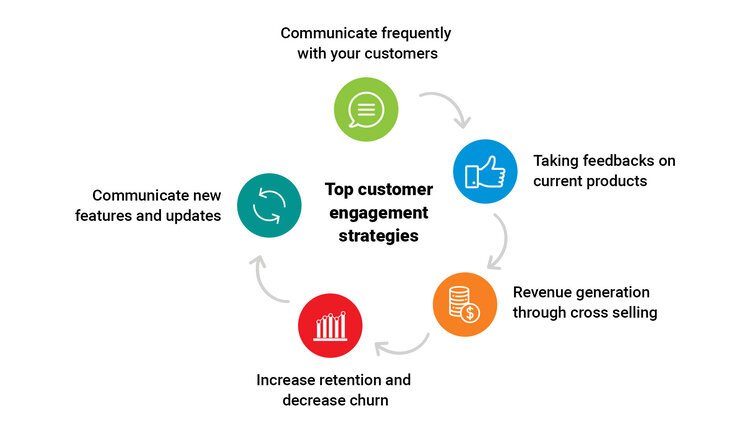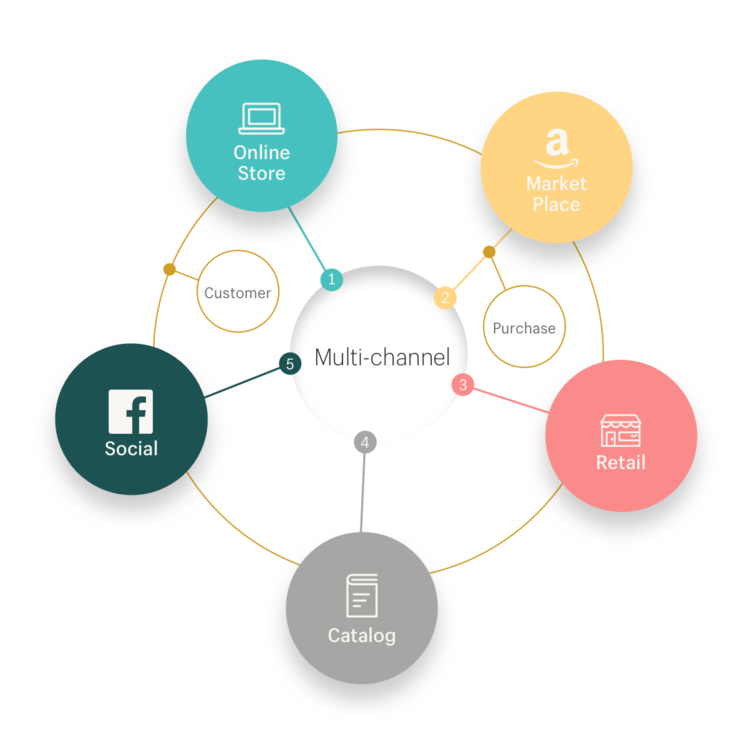Pharmaceutical Marketing: Strategies
The strategies and market approaches in the pharmaceutical sectors.
We often encounter confusion between the terms strategy and tactics. Sometimes, when strategy is discussed, blogging is mentioned but to me, blogging isn’t necessarily a high-level strategy, rather more a strategic tactic or put simply, a tactic to undertake the strategy or the strategic direction of the proposed marketing campaign.
Another way to put it: The strategy is the overall campaign plan and the tactics are the actual means to achieve the objective of the strategic plan. The strategy is the planning, where the latter is the doing. So for this post we will look at strategy (this e-book explores 25 pharmaceutical marketing tactics and techniques).
Subscribe for marketing insights via email
So when we look to define a pharmaceutical marketing strategy or a range of strategic marketing options, we need to ask ourselves the following questions in accordance to our marketing/organisational objectives:
How will our marketing activities help make sales?
What market trends are emerging that we need to respond to?
What position will we strive to achieve?
Which pharma market segments will be targeted with which propositions?
What communication strategies will be used to support customer acquisition?
What experience will we look to create for our audiences?
How can we differ from our competitors?
At this stage, we’re not so much looking to reach an audience per se, we’re actually looking at how and what we will be saying to that audience once we reach them. In the most basic language, a pharmaceutical marketing strategy looks at the objective of a marketing team or organisation and defines how to get there.
In this post of pharmaceutical marketing strategies, we will look at some avenues to “get there” and achieve objectives as well as provide some examples of marketing strategies which you will have seen before.
Strategic pharmaceutical marketing
Pharmaceutical organisations regardless of where it sits within the supply chain or whether it focuses on a B2B or B2C audience will need to adopt a particular marketing strategy to effectively sell its products and services. We’ll run through some of the most common pharmaceutical marketing strategies next.
1. Market/product development strategy
A product/market development strategy concerns developing new products or modifying existing products and offering those products to current or new markets. These strategies typically surface when there is little opportunity for growth in an organisation's existing market.
The four most common strategies in this category derive from the Ansoff Matrix (below): market penetration (growing sales of an existing product in existing markets), market development (launching an existing product in a new market), product development (introducing an existing product into a new market) and diversification (introducing a new product into a new market).
Your pharmaceutical product or service will be promoted in accordance with the Ansoff Matrix almost every time and can dictate the marketing strategy you will adopt. For example, we see so many partnerships and mergers in this industry, where pharmaceutical organisations combine their resources and leverage their strengths to increase market share in this manner. Should a pharmaceutical organisation want to sell more products in current markets, it might decide to invest more in its marketing budget.
SEARCH ENGINE OPTIMISATION
A search marketing (SEO) strategy looks to increase visibility on search engines to increase the number of visitors arriving at a website and its web pages. A strategic approach that takes time, but the results that manifest over this time are often long-term and can achieve an objective of becoming more visible, certainly in current markets. More and more pharmaceutical organisations are adopting more digital-first strategies such as this to increase visibility. For more, please see this article on Pharma SEO.
DIRECT SALES
The traditional method of employing sales personnel and then deploying those in the regions and markets where you are looking to generate new customers is still widely used today. This is certainly the case in the B2B pharmaceutical markets where face-to-face contact is still a large enabler of business. This non-marketing strategy needs guidelines on how to recruit salespeople who understand how to sell products in new and often emerging markets but has proven (and still does) to be effective.
2. REVENUE STRATEGY
A revenue model strategy (or more casually, a business strategy) is a strategy usually focused on forming a product or service whereby advertising or licencing revenue can be generated subsequently, or more broadly, a strategy focused on generating revenue.
Magazines and publications follow this strategy, albeit on different levels where a customer-base is usually built to be leveraged. In this case, the editorial team is commissioned to write content that is packaged into a printed publication, as well as for an online audience that can subscribe, that is then used to drive advertising revenue from organisations that wish to advertise to this audience. Co-branded promotions and list rentals are hugely popular in this respect and are not limited to media and publishing organisations alone, as many organisations outside of this space can adopt this strategy to reach its business goals.
Pharmaceutical organisations also outsource at least part of their R&D processes to other pharmaceutical organisations and according to AMR Research, today most pharmaceutical and biotech companies outsource at least a proportion of their clinical trial management process, another example of how pharmaceutical are perusing cost/revenue-based strategies.
AFFILIATE MARKETING
Affiliate marketing - a type of performance-based marketing in which a business rewards one or more affiliates for each visitor or customer brought by the affiliate's own marketing efforts - broadly falls within this category. This is the case as an affiliate program’s sole purpose is to sell products with minimal marketing spend waste as affiliates are paid on a per-sale basis.
EMAIL MARKETING AND LIST BUILDING
Organisations that rent assets and inventories fall within this category, and email marketing has become a popular channel in this respect. Organisations can rent email lists (for a price) so that other organisations can sell their products to the subscribers within that email list. This is an interesting concept as, for the most part, the owner of the email list will not sell its own services to its own list. For more, see this article on B2B email marketing best practices.
3. TARGET MARKETING STRATEGY
Every pharmaceutical marketing strategy will involve an element of targeting. Targeting enables organisations to narrow their focus and aim marketing campaigns and messages at a specific segment of the market, thus becoming more relevant to the audience and increasing the chances of conversion into a customer or client. Essentially focusing on customers that an organisation can serve best.
A targeting strategy often involves focusing on organisations via one or more of the following attributes: Most profitable customers, larger or smaller organisations, loyal customers, customers that are not brand-loyal and employees of a particular organisation (see post on ABM strategies and tactics) for B2B organisations.
Depending on the pharmaceutical organisation type, this process is potentially a two-step process. The first targeting exercise is the customer from a B2B perspective and then the end-user from a B2C perspective. A holistic view on the segmentation process, for example, could enable an OTC and Nutraceutical marketing organisation to develop insights and perspectives that are essential for developing a winning strategy in the OTC and Nutraceutical market.
MARKET SEGMENTATION
Markets consist of various demographic characteristics, needs and behaviours, therefore products/services and marketing messages may not relate to all of these people. So, strategic segmentation provides an opportunity to target specific messages and campaigns towards specific audiences. Creating buyer personas is a great way to start the process, as you will immediately understand the audience(s) which you are targeting to tailor your content towards. Lifecycle targeting is also another option to consider, which can be done by targeting content at your audiences during specific stages of the buyer’s journey.
PRODUCT AND SERVICE POSITIONING
Although it’s sometimes normal that a competitor’s product and service offering differs online versus offline, it is often that an organisation’s overall offering is very similar to that of a competitor’s. With this in mind, positioning your products/services, organisation and brand - and giving it its own USP - can be the differentiation that tips offering as the most desired solution from the competition.
4. POSITIONING AND DIFFERENTIATION STRATEGY
The section above briefly touches on positioning and differentiation in the context of segments and sub-markets - elements concerned with the customer. This strategy, on the other hand, assumes that the organisation’s marketing strategy indeed takes into account the customer’s perception of the offering but relative to those of the competition.
Organisations can position their products and services according to four variables: Product quality, service quality, price and fulfilment time. Reviewing your internal strengths and comparing them to those of your competitors, a differentiation strategy that positions your offering above those of your competitors can be achieved giving the organisation a competitive advantage.
To bring the strategy to life, the pharmaceutical organisation can define the product strategy, as PharmExec state: “A product positioning statement is a series of phrases or sentences that articulate the drug's unique selling proposition, typically including the brand name, product category, target customers, key benefit, and primary competitive differentiation.”
BRAND DEVELOPMENT
Branding is how organisations are perceived in the minds of the audience. Organisations can differentiate themselves from the competition with a brand strategy. More than simply a name, term, design, or symbol, a brand is the recognisable feeling a product or business evokes. Brand management begins with an analysis of how a brand is currently perceived in the market and then proceeds to plan how the brand should be perceived if it is to achieve its objectives.
ONLINE/OFFLINE VALUE PROPOSITION
A value proposition is not just a statement of the benefits of the products and services to reinforce the core proposition to differentiate it from the competitors. It also acts as a driver for developing content and communicating messages that will strategically fit with its indented audience, providing a direction for all marketing messages.
5. CUSTOMER ENGAGEMENT STRATEGY
A popular strategy, that one way or another, most companies will adopt. The strategy aims to create compelling content and experiences and encourages interaction and participation.
With the development of technologies and the growth of marketing platforms and channels, a customer engagement strategy is highly common for most B2C organisations, as well as B2B brands who are looking for a two-way dialogue with their audiences. This is certainly the case for us here at Orientation Marketing. The aim here is to develop a community around the brand whereby audiences can interact with certain content.
In the pharmaceutical industry, more so big pharma, and just like most other consumer-facing industries, there are more products and more messages subsequently meaning more noise. PharmaPhorum explores this and looks at key trends affecting a customer engagement strategy in the pharmaceutical industry such as the changing audience, rise of medical affairs and the development of new patient support programmes.
CONTENT/INBOUND MARKETING
Content marketing is the process of writing and publishing content to educate potential customers about products and services or solutions to common problems for target audiences. Content marketing is an effective strategy to engage with audiences just as it is within a market/product development strategy, for example. To enter new markets, content marketing (or inbound marketing) can help with the positioning of a new product, generate awareness and generate new leads.
SOCIAL MEDIA STRATEGY
Social media platforms provide an audience of highly engaged people, who can be targeted both organically and via paid means to help achieve marketing objectives. The scope of social media optimisation also includes the incorporation of features such as sharing and commenting on social media platforms and on company websites. Such a strategy can incorporate all of or a range of networks, such as Twitter, LinkedIn, Facebook and Instagram, to only adopting just one which is most frequently used by your particular audience. Paid social media marketing allows you to build a strong online presence of your brand on social media platforms quickly, with the caveat that investment is required, usually in the form of pay-per-click.
6. MULTI-CHANNEL STRATEGIES
A multi-channel marketing communications strategy reviews the different types of customer contact with an organisation to then determine how these touchpoints can be incorporated within a marketing plan to reach objectives. This strategy involves both online and offline channels and can connect outbound call with a website and email, for example.
Multi-channels strategies derive from an internal audit to determine customer channel preferences as well as the preferences of the organisation usually based on internal processes. Pharmaceutical organisations are required to consider many elements of the strategy, such as customer insight, the experience as well as its internal capability when adopting multi-channel strategies.
Two common marketing strategies that pharmaceutical organisations can broadly adopt arise from this sort of strategy.
CUSTOMER ACQUISITION STRATEGY
A customer acquisition strategy defines the best mix of media and engagement tools (lead generation and product offers) to gain new customers by targeting them and reaching them through online and offline customer journeys. This strategy involves a marketing focus of generating new business leads and customers, often in the form of inbound sales-related enquiries. An essential component for most organisations.
CUSTOMER RETENTION STRATEGY
A customer retention strategy focuses less on generating new customers and focuses more on keeping current customers - customers who you’ve already invested in and earned - happy, loyal and buying from you. This might include delivering service that’s consistent with your value proposition and brand or cross-selling, up-selling, asking for referrals from existing customers and developing programmes that increase customer loyalty. Customer services teams are in place for this very reason.
STRATEGY AS A PATH TO REACH YOUR OBJECTIVES
Strategy, as a word, is derived from the Greek “strategos” originally intended to mean “the art of the general.” Those generals would never have engaged in hand-to-hand combat meaning that your pharmaceutical marketing strategy, similarly, defines how you will deploy your armies and resources and the six strategies listed in this post are prime examples of this at work in the pharmaceutical and related industries.
Marketing to patients and doctors require distinct strategies, just as it would between organisations within the B2B supply chain, but pharmaceutical marketing, in general, involves the same principles that you find in any other industry.







